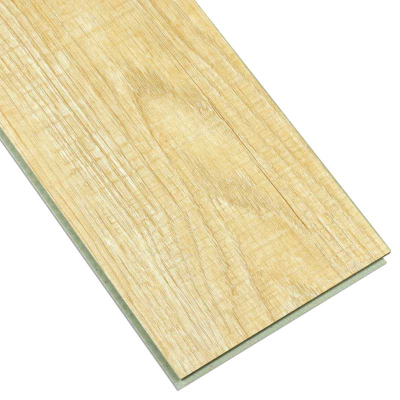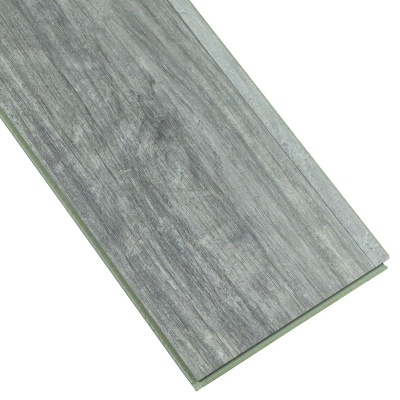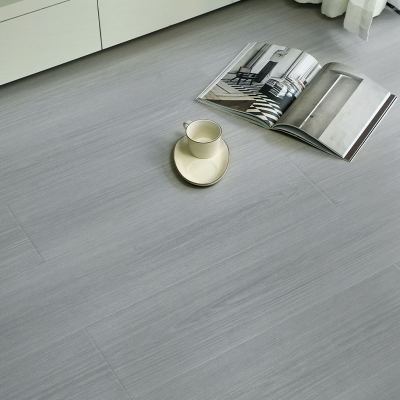What is laminate flooring made of, wood or plastic?
The authoritative guide to laminate flooring: Components, Classification and performance
The most accurate classification of laminate flooring is that it is neither solid wood nor a pure plastic-based product. From the perspectives of materials science and manufacturing, it is precisely defined as an engineering composite material product. This naming highlights its complex structure, which combines a core base material mainly derived from wood with a highly durable plastic surface layer. The innovative synthesis of these different materials has produced a floor solution that demonstrates performance characteristics distinct from its main components.
The most effective way to understand the essence of laminate flooring is to conduct a detailed inspection of its layered structure. This structure is manufactured through an industrial high-pressure manufacturing process known as lamination, from which the common name of this product comes. This process permanently fuses the constituent layers into a single, unified, and enhanced wooden board.
Anatomical Deconstruction of laminate flooring: Four-layer Structure
A standard laminate flooring is an engineering wonder, consisting of four distinct, closely bonded layers, each with a key function:
1. Wear layer (top layer
Material composition: This layer is composed of a transparent and particularly elastic plastic resin coating, mainly aluminum oxide. This compound was selected for its special hardness and ranks highly on the Mohs scale of mineral hardness.
Function and application: As the main defensive barrier of the floor, this layer is responsible for the product's renowned resistance to wear, scratches, abrasion, stains and fading caused by ultraviolet radiation. The integrity and thickness of this layer only determine the wear resistance grade (AC) of the product, which is a standardized European standard (EN) classification system, ranging from AC1 (medium residential use) to AC5 (heavy commercial use). This grade provides a quantifiable measure of the floor's suitability for different traffic intensities. The presence of this sturdy plastic polymer surface is the main reason why laminates are often regarded as "plastic flooring", although this is not accurate.
2. Decorative layer
Material composition: This layer is high-definition printing decorative paper.
Function and application: This paper is impregnated with melamine resin and features carefully designed high-resolution photographic images to replicate the appearance of natural materials such as wood grain, stone, ceramics or abstract designs. The photographic fidelity and artistic details of this layer are the reasons for the great aesthetic diversity and realistic appearance of modern laminate products. The saturation of melamine resin not only protects printed matter but also transforms paper into a tough plastic injection sheet, which contributes to the overall durability of the product.
3. Core Layer (Structural Engine
Material composition: The base layer is mainly high-density fiberboard (HDF). Medium density fiberboard (MDF) is less frequently used.
Function and application: This central layer forms the structural pillar of the wooden board, providing it with mechanical strength, dimensional stability, impact resistance and acoustic performance. HDF is an engineered wood product manufactured through the process of breaking down hardwood or softwood residues, such as wood chips and sawmill shavings, into individual lignocellulose fibers. Then these fibers are combined with synthetic adhesives (usually urea-formaldehyde or melamine-urea resin) and subjected to high temperature and high pressure to form a dense and uniform panel. Mechanical locking systems (for example, click locking, folding) are precisely machined in this dense HDF core, making tool-free installation possible for most modern laminate floors. This layer represents the main "wood" component of the floor, although it is in a reconstructed and engineered form.
4. Backing layer (stabilizing layer
Material composition: A moisture-proof sheet, usually made of saturated plastic or resin materials.
Function and application: This final layer serves as a crucial balancing and stabilizing agent. It acts as a water barrier to prevent moisture from entering from the bottom, avoiding warping, cupping, and other forms of deformation caused by moisture. In addition, it neutralizes the inherent stress transmitted from the top layer, ensuring that the wooden board remains dimensionally stable and flat under different environmental conditions.
Key professional insights and differentiation
The difference from solid wood flooring: Laminate flooring has fundamental differences from solid wood flooring. It lacks a thick and wear-resistant solid wood surface that can be sanded and repaired multiple times throughout its service life. The decorative appearance is a photographic reproduction




